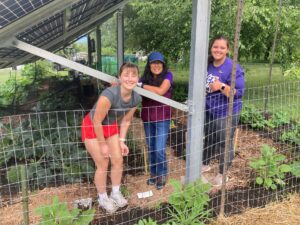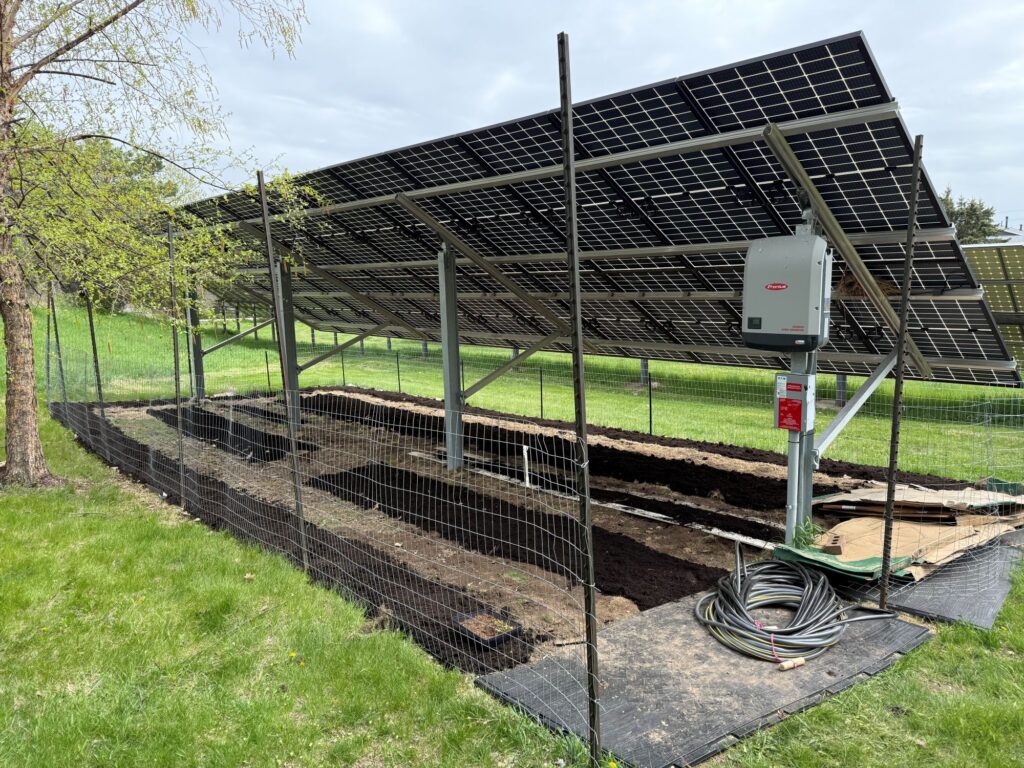
What do you get when you combine agriculture and solar farming? The answer is, Agri-voltaics! Agrivoltaics is a common worldwide practice and is a great way to utilize land under and around solar arrays by growing shade tolerant fruits and vegetables, native plants or hosting grazing livestock. Prairiewoods has taken on this practice under our oldest solar array by starting a vegetable garden to supplement and test different types of produce than what our permaculture food pantry garden currently provides.
With the help of our dedicated volunteer, Gina Sison, we were able to grow a diverse group of veggies, including pattypan squash, tromboncino squash, cherry tomatoes, dragon tongue beans, celery, carrots, broccoli, cucumbers, ginger, peas, turnips, peppers, a variety of greens and herbs, and mushrooms such as lion’s mane, shitake, and yellow oyster. Flowering plants like strawflowers, snapdragons, marigolds, nasturtiums, and sweet alyssum were also included to attract pollinators and beneficial insects to the garden.
With this being a new practice to us we were sure to do some research, and in our project planning we found that many common vegetables would tolerate this mostly shaded area. In fact, we think the shade helped them thrive and not become over heated. The solar arrays themselves benefit from the cooling effect of transpiration from the live plants, helping them to operate more efficiently. Most of the vegetables and flowers planted in spring were started using heat mats and grow lights inside the adjacent I-Renew building, which uses the power generated from the solar panels. To minimize the use of plastics, we used soil blocks on stainless steel trays to start our seeds. It has gone so well, we have plans to expand out from underneath the array and into a mowed area next spring, maximizing the space the land offers.
Sustainability and land stewardship have always been a big part of Prairiewoods’ philosophy and land ethic. Whether it’s the straw bale hermitages, a solar water heater, permeable pavers, insulation berms, catchment ponds, permaculture food forests, or a gravel bed tree nursery, Prairiewoods has always been at the forefront of sustainable building and land practices. With this in mind, we wanted to share an example of what is possible with this agrivoltaics project. We are encouraged by the strong yield and harvests that are contributing to putting nutritious ingredients on guests’ plates and we love the positive feedback from our admiring visitors. It is also exciting to see how our talented chefs are able to make tasty recipes using lesser known produce such as tromboncino and patty pan squash.
—Aaron Brewer, Prairiewoods’ Land Sustainability Coordinator
